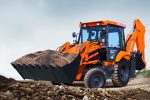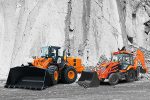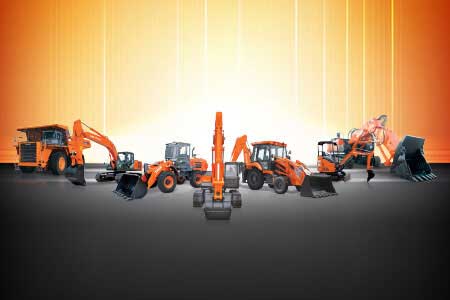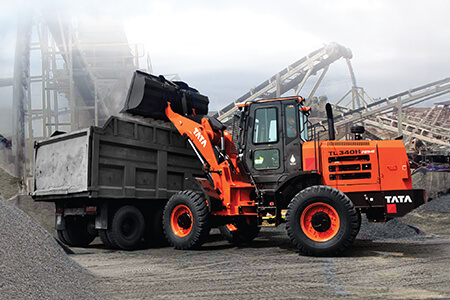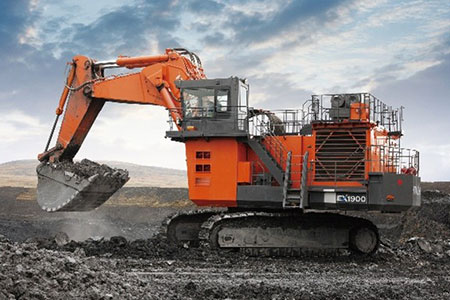How to use a Mini Excavator?
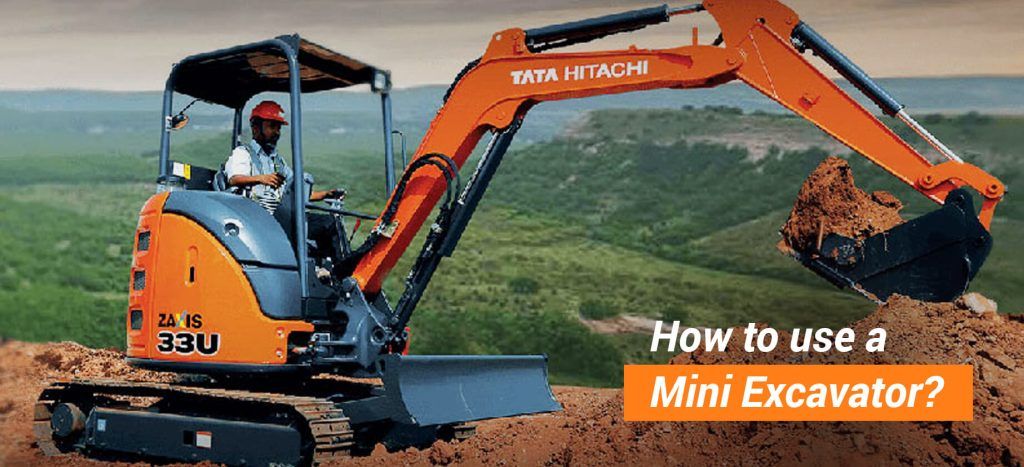
Mini Excavators can be used when you need a solution to complete more work on construction projects within short deadlines and high-quality requirements without tiring out your workers. Additionally, you want lightweight, maneuverable equipment that can pass through gates, traverse uneven terrain, and make turns without causing harm to neighboring buildings or machinery. Mini excavators, also known as compact excavators, are frequently the best choice. They deliver the power you need to do tasks quickly, given their outstanding mobility, and reduced risk of damage.
What is a Mini Excavator used for?
Depending on the size of these Compact Excavators, they can perform various jobs. Generally, they are used for digging, trenching, backfilling, leveling, grading, and even drilling. Below mentioned are a few applications of the Mini Excavator:
- Mini Excavators are the ideal answer for digging up in-ground pools or hot tubs, even in the tiniest backyards. The equipment is a favorite for residential earthworks because of its precision handling, power, and mobility.
- Operators can access small spaces close to structures with the help of Mini Excavators and move dirt effectively when fixing sewage lines. Following the repair, these machines are also used to level the yard with an attachment like a dozer blade.
- Because of their exceptional ability to fit into tight spaces and the range of attachment choices they offer, mini excavators excel at digging. Traditional shoveling is exhausting and time-consuming, and it has the potential to make projects take much longer to finish. However, using a small excavator for excavating is productive and efficient. A Mini Excavator helps in digging holes for tree transplants. With the help of the right attachments, it can also remove larger trees.
- Mini excavators can also be used for demolition. Many construction projects include demolishing smaller buildings like sheds and other outbuildings, but it’s doubtful that you’ll need a little excavator. To disassemble small constructions, mini excavators are far safer and more effective than hand-powered equipment. They can get past gates and other restricted places on the job site because of their small and compact size.
- Landscape maintenance is made easier and faster with the use of mini excavators. Use a tiny excavator to dig ditches for irrigation or plant plants and bushes rather than manually scooping soil. A portable mini excavator can quickly move about the land without leaving significant track traces or harming the plants or soil.
How Does a Mini Excavator work?
Many construction operations are more productive and safe when done using mini excavators. Their compact size enables swift movement into tight spaces, expediting various tasks. Below mentioned are a few steps to operate a Mini Excavator:
- Before operating, ensure you are familiar with the position and purpose of each control. Never alter the way the control lever is used. If the operator fails to do that, it will result in machine malfunction.
- When excavating grooves next to walls or roadsides, run the machine effectively using the boom swing feature. The boom-swing pedal on the operator’s right foot is used to operate the boom swing.
- Use the lever on the operator’s right side to raise and lower the blade. The blade lever immediately returns to neutral when it is released, retaining the blade in place until the lever is pressed once again.
- The purpose of the pilot control shut-off lever is to prevent machine malfunction if the control levers are unintentionally changed when the operator exits or enters the cab. The console latch mechanism is connected to the pilot control shut-off lever to make it easier to enter and depart the operator’s station and for maintenance.
- Park the machine on a firm and level surface. Lower the bucket and the blade to the ground. Return all control levers to neutral. Properly shut down the engine. Pull the pilot control shut-off lever and raise the console to the full lock position.
- The standard operating temperature of hydraulic oil is between 50 and 80 °C (122 and 176 °F). If the machine is run while the hydraulic oil temperature is below 20 °C (68 °F), hydraulic components may suffer substantial damage. Follow these warm-up methods before beginning work until the hydraulic oil temperature is above 20 °C (68 °F).
- For operating the backhoe, use the right arm and bucket for the work. Pull the bucket toward the machine using the arm as the main digging force. When soil sticks to the bucket, remove it by moving the arm and/or bucket rapidly back and forth. Place the bucket teeth on the ground with the bottom of the bucket at a 45degree angle to the ground. When trenching a straight line, position the tracks parallel to the trench. After digging to the desired depth, move the machine as required to continue the trench. When operating the arm, avoid bottoming the cylinder to prevent cylinder damage.
- For Grading operations, use the blade for soil refilling and general grading operations after excavation. Grading operation can also be performed by operating the boom, arm, and bucket simultaneously.
- Slowly roll in the arm while slightly raising the boom when grading from the forward to the backward. As soon as the arm passes the vertical position, slowly lower the boom so that the bucket can be horizontally moved. Operate the arm and bucket rolled back when grading from the backward to the forward as described above.
- Do not travel while thrusting the bucket teeth into the ground, and do not raise the rear of the machine to use the machine’s weight as an additional digging force. This may cause Severe machine damage may result.
How to Dig with a Mini Excavator?
Operators must first be familiar with the equipment and its capabilities. Pushing a mini excavator beyond its limits is the largest error a user can make. To ensure that the equipment operates efficiently, digging should involve accurate, smooth cuts. By pushing the hydraulics above to relieve pressure and stalling the work equipment, taking an excessively large “bite” wastes both fuel and energy. The equipment should be positioned for material loading at a productive height when digging. The height of the bench should be roughly equal to that of the sideboards on the haul truck. The left side of the machine, which gives the finest loading angle and visibility, is the side that most experts advocate putting up for the trucks to descend. Beyond these basic digging methods, it is critical for operators to comprehend how methods vary based on the project or application at hand.
Advantages of a Mini Excavator:
The need for these compact excavators has increased dramatically during the past ten years. Mini excavators may appear small, but they still have a lot of power to perform a wide variety of tasks.
- This specific sort of equipment has a compact body that can accommodate various attachment types and bucket sizes. Therefore, you may easily adapt it to fit a variety of jobs. A Mini excavator is easy to operate in terms of operation. Most of the time, you can handle the equipment without hiring a specific employee. The operation can be learnt within a few hours by almost anyone.
- Hydraulic excavators have many drawbacks, including an inability to access confined locations. This makes it very challenging to achieve accuracy in a project with small spaces. For jobs like roadwork and comparable ones, this becomes a problem. Such problems may be resolved if you use a Mini Excavator. The features of a zero tail or ultra-short tail, or short tail, makes these compact excavators move and revolve with constraint areas.
- Often, moving machinery proves to be difficult. If you are hiring the equipment and want to carry it from the dealer to your work site or you want to transport the machine from one location to another, you will need to plan accordingly. The difficulties are significantly minimized if it is a Mini Excavator. They can easily fit in pickup truck trailers or even extended pickup beds.
- The Mini Excavator’s functioning is not constrained by its size. Because these compact excavators still have the capacity to swing 360 degrees. You don’t need to move dump trucks to accommodate these compact excavator’s placement; instead, the mini excavator will simply swing to load the dump truck from wherever it is positioned.
- The bottom line for every client is to get the job done for the least amount of money possible. A Mini excavator is appropriate for small and medium-scale projects because of its lower cost. They provide the intended effects without putting undue strain on the company’s capital investment budget. It also has a reduced fuel consumption demand and a lower rate of wear and tear, lowering variable expenditures like maintenance and replacement.
- A Mini Excavator uses less fuel and emits lesser pollutants than a regular excavator. Setting the engine’s RPM helps to prevent the machine from wasting extra fuel while producing no additional output; as a result, resources may be used to their maximum potential. Additionally, the hydraulic system improves cycle time and productivity. This is a cost-cutting strategy for lowering the job’s ongoing expenses.
- Another best part of these Mini excavators is it does not produce much noise compared to regular hydraulic excavators. They work on any kind of job location efficiently without making their presence felt.
Mini Excavator Specification:
Generally, a Mini excavator is categorized on its operating weight. The Mini Excavator is present in two categories ranging from 2ton-2.3ton and 3ton-3.3ton. When we talk about the Mini excavator specifications, it consists of an engine with horsepower that varies from model to model. The main specification is the hydraulics that drives the engine. The front side of a mini excavator consists of a boom, arm, and bucket. It is designed with a canopy or cabin, which consists of a lock lever for safety, two joysticks to move the boom, arm, and bucket, two pedals for movement of the mini excavator, one dozer blade, and a small joystick for the movement of the dozer blade. It also has a boom swing pedal and an undercarriage. The mini excavators have a wide variety of optional attachments, making them versatile and unique.
Recent Articles
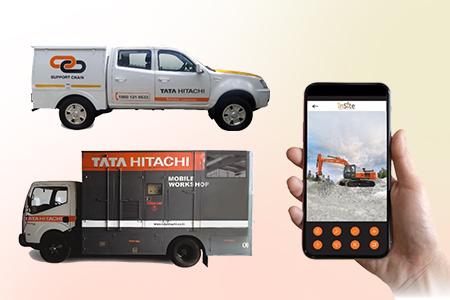
August 1, 2025.
The Role of After-Sales Support in Heavy Equipment Longevity
The Role of After-Sales Support in Heavy Equipment Longevity In industries like construction, mining, and infrastructure development, the journey doesn’t Continue Reading
Read more →
August 1, 2025.
How the Right Attachments Can Reduce Heavy Machine Downtime
How the Right Attachments Can Reduce Heavy Machine Downtime In construction, mining, and infrastructure projects, machine downtime often leads to Continue Reading
Read more →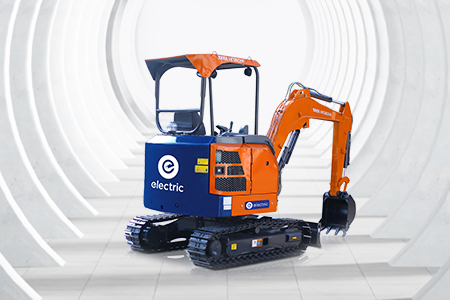
July 31, 2025.
Electric Construction Heavy Equipment Machinery: Benefits, Disadvantages, and More
Electric Construction Heavy Equipment Machinery: Benefits, Disadvantages, and More Introduction The construction equipment industry is undergoing a major transformation Continue Reading
Read more →

